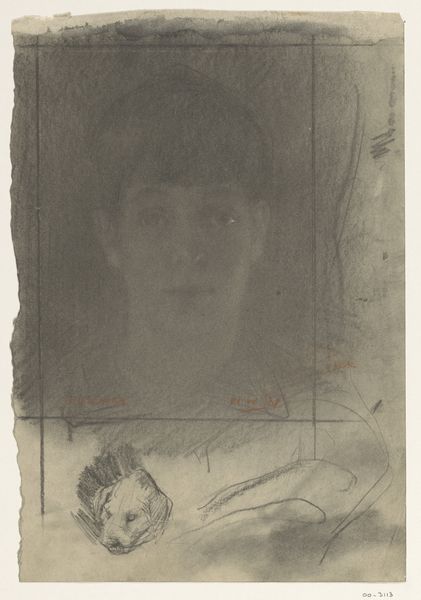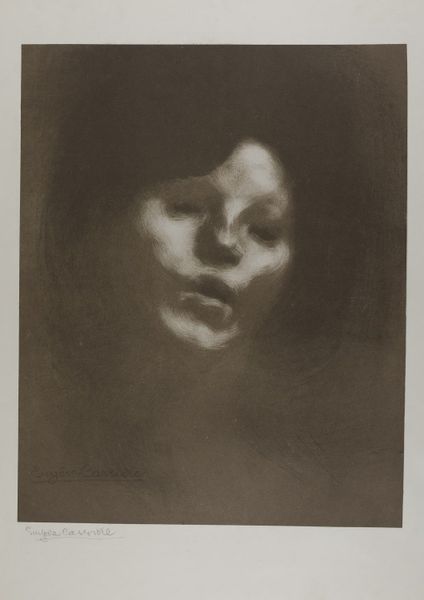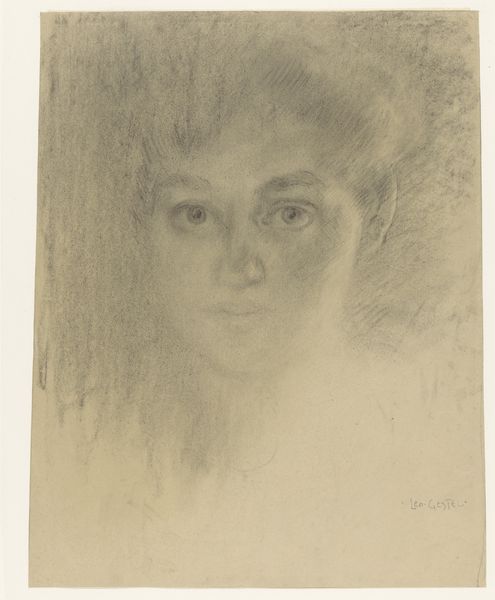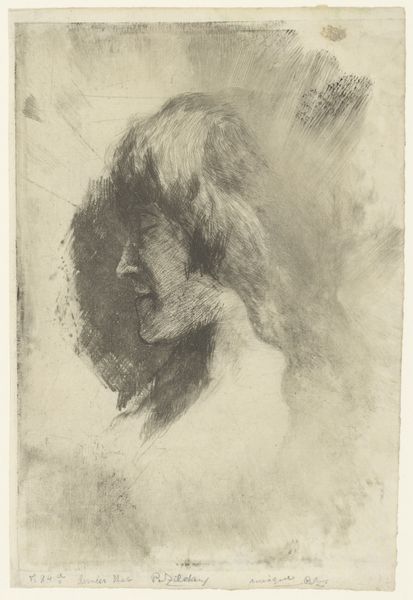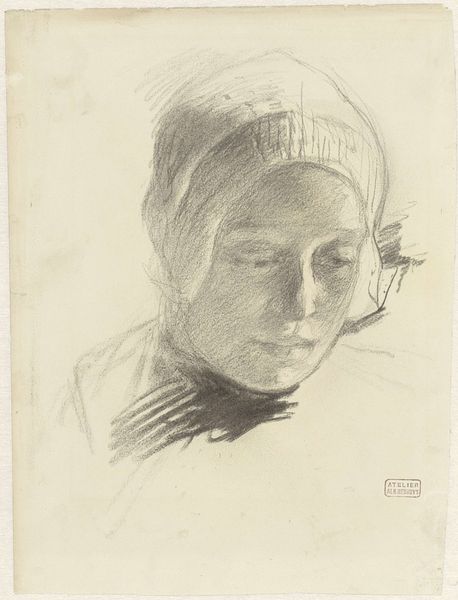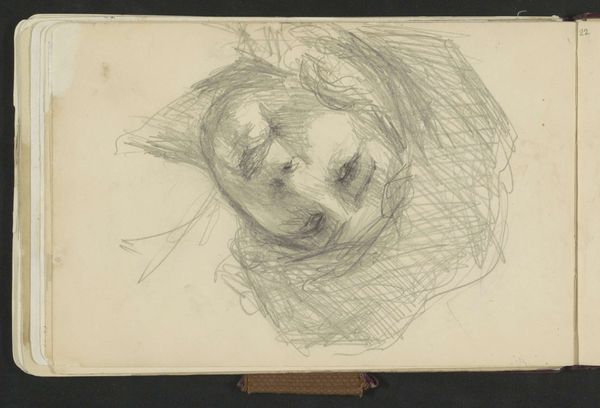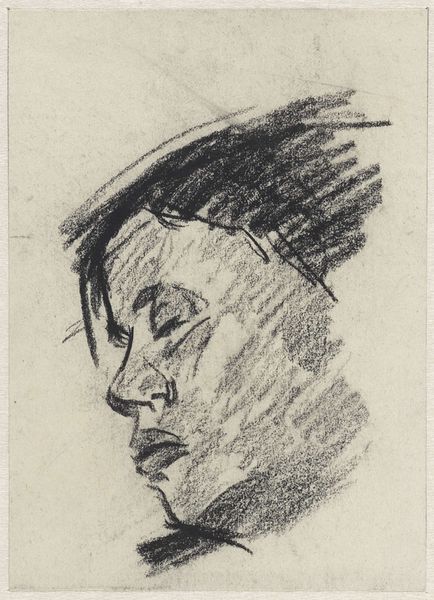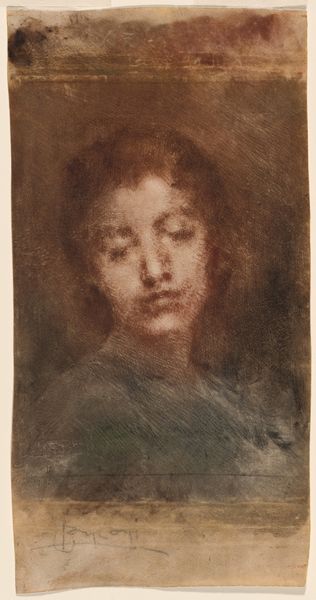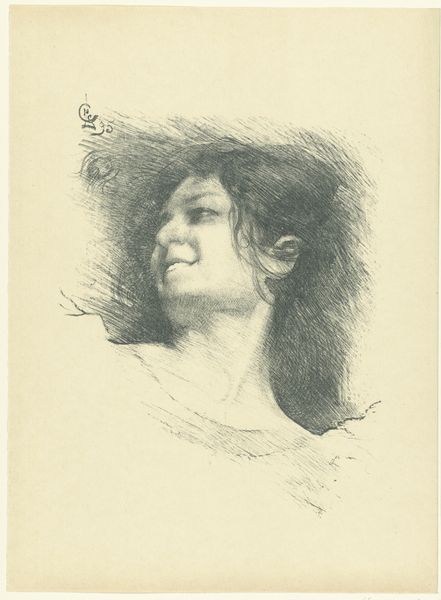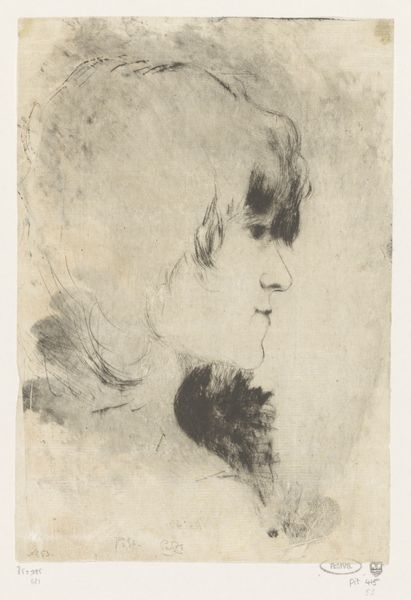
drawing, charcoal
#
portrait
#
drawing
#
charcoal drawing
#
charcoal
#
realism
Dimensions: height 202 mm, width 132 mm
Copyright: Rijks Museum: Open Domain
Curator: Before us is George Hendrik Breitner's "Hoofd van een vrouw, van voren," likely created between 1867 and 1923. It resides here at the Rijksmuseum. Editor: The immediacy of the charcoal sketching really strikes me. There’s an unfinished quality to it, raw and vulnerable. It’s compelling how the artist has left so much implied, relying on the viewer to complete the image. Curator: Precisely. Consider the very deliberate application of charcoal; the contrast achieved with smudging techniques directs our attention, framing the subject's face. Breitner captures a tangible likeness with economical means. Note how the structural interplay between light and dark creates form. Editor: But the roughness is vital, wouldn't you agree? It’s charcoal, so it's burned wood. Someone made that charcoal, handled it. It's a material linked directly to both the landscape it comes from and the hand of the worker that processed it for Breitner's use. We see its marks here, unrestrained and potent in the application across paper, which itself had to be manufactured, bought, and prepared. Curator: Certainly, the material presence is undeniable. And through that materiality, Breitner establishes a spatial depth despite it being a mostly planar depiction. The darker regions above and below the face allow it to emerge forward. The gaze of the sitter seems lowered, but focused—almost melancholic. Editor: I think understanding the process of portraiture then gives greater resonance to the mood you are discerning here. Who was this woman, and what was Breitner paying her? These details enrich our viewing as we speculate about her conditions or place during its making. We gain a deeper awareness of art making's context as well. Curator: Indeed. "Hoofd van een vrouw, van voren" is successful in showing just how emotionally engaging the minimalist formal approach can become through judicious balancing between chiaroscuro shading coupled with suggestive rather than prescriptive linear definitions, creating both a likeness but simultaneously hinting toward an interior psychology through purely visual terms. Editor: It reveals to us also how every object is bound in labour; that this sketch carries so many undercurrents related to industry gives new avenues by which we should value our artworks within cultural systems beyond sheer aesthetics or authorial mastery.
Comments
No comments
Be the first to comment and join the conversation on the ultimate creative platform.
